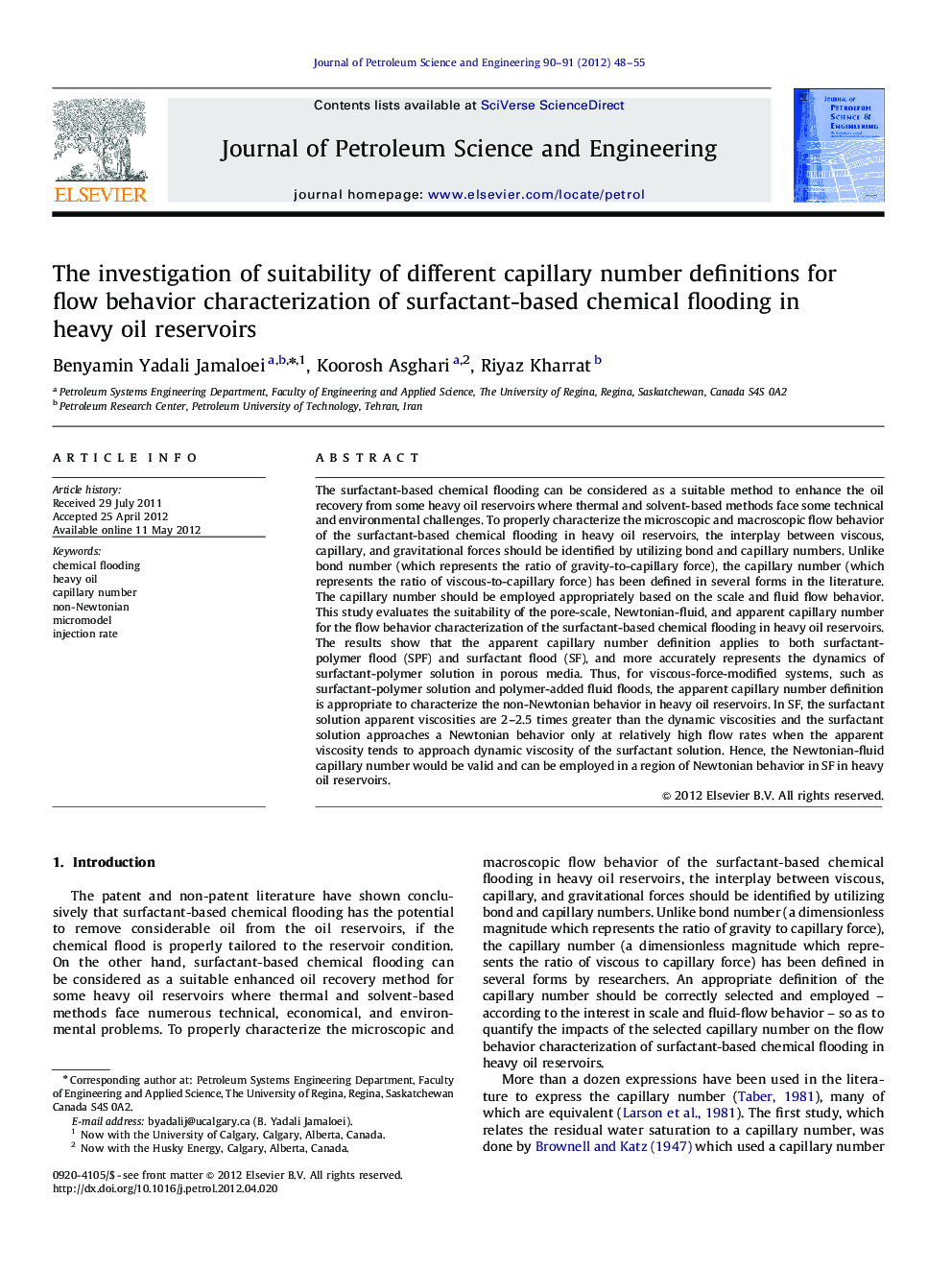| کد مقاله | کد نشریه | سال انتشار | مقاله انگلیسی | نسخه تمام متن |
|---|---|---|---|---|
| 1755434 | 1522846 | 2012 | 8 صفحه PDF | دانلود رایگان |

The surfactant-based chemical flooding can be considered as a suitable method to enhance the oil recovery from some heavy oil reservoirs where thermal and solvent-based methods face some technical and environmental challenges. To properly characterize the microscopic and macroscopic flow behavior of the surfactant-based chemical flooding in heavy oil reservoirs, the interplay between viscous, capillary, and gravitational forces should be identified by utilizing bond and capillary numbers. Unlike bond number (which represents the ratio of gravity-to-capillary force), the capillary number (which represents the ratio of viscous-to-capillary force) has been defined in several forms in the literature. The capillary number should be employed appropriately based on the scale and fluid flow behavior. This study evaluates the suitability of the pore-scale, Newtonian-fluid, and apparent capillary number for the flow behavior characterization of the surfactant-based chemical flooding in heavy oil reservoirs. The results show that the apparent capillary number definition applies to both surfactant-polymer flood (SPF) and surfactant flood (SF), and more accurately represents the dynamics of surfactant-polymer solution in porous media. Thus, for viscous-force-modified systems, such as surfactant-polymer solution and polymer-added fluid floods, the apparent capillary number definition is appropriate to characterize the non-Newtonian behavior in heavy oil reservoirs. In SF, the surfactant solution apparent viscosities are 2–2.5 times greater than the dynamic viscosities and the surfactant solution approaches a Newtonian behavior only at relatively high flow rates when the apparent viscosity tends to approach dynamic viscosity of the surfactant solution. Hence, the Newtonian-fluid capillary number would be valid and can be employed in a region of Newtonian behavior in SF in heavy oil reservoirs.
► Apparent capillary number applies to surfactant-polymer (SP) and surfactant (S) flood.
► Apparent capillary number better describes dynamics of SP solution in porous media.
► For SP solution, apparent capillary number better characterizes non-Newtonian behavior.
► In SF, surfactant solution approaches Newtonian behavior only at high flow rates.
► In SPF, Newtonian capillary number is smaller than pore-scale and apparent capillary number.
Journal: Journal of Petroleum Science and Engineering - Volumes 90–91, July 2012, Pages 48–55